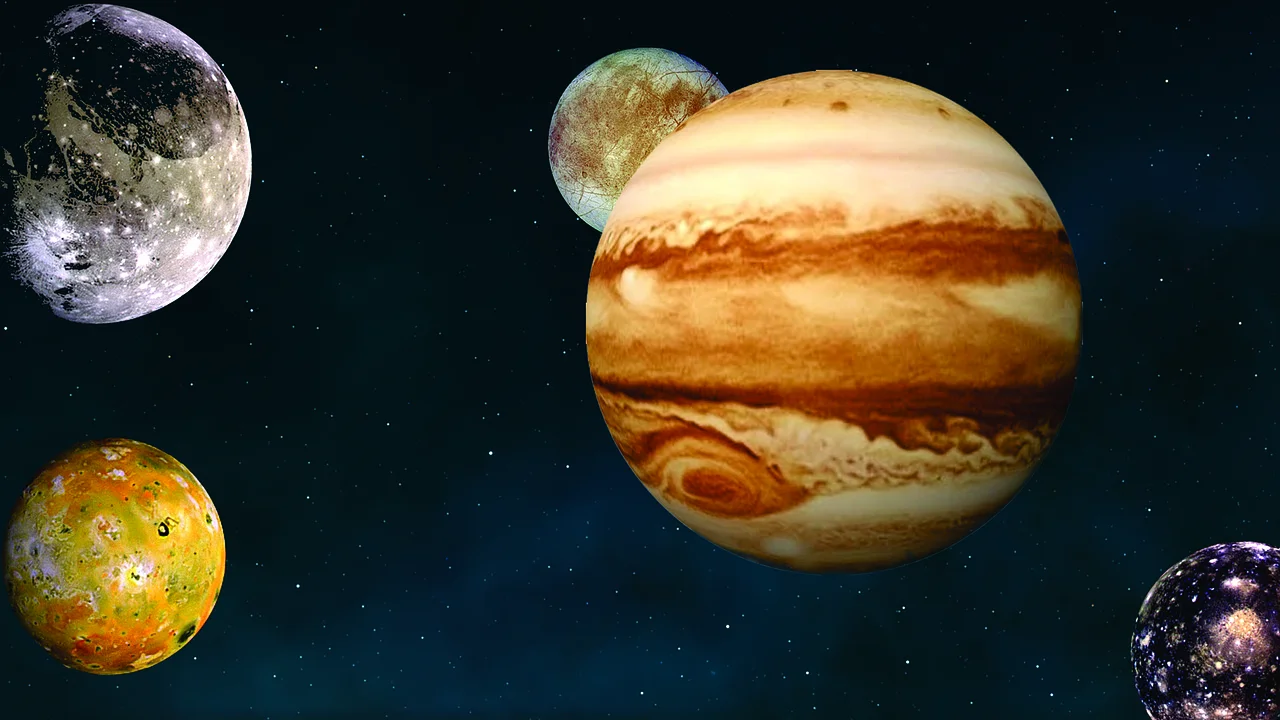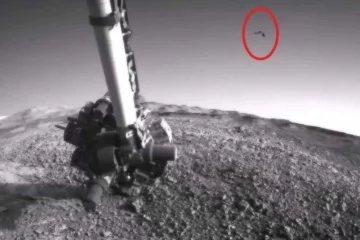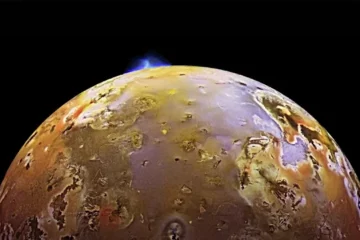Exploring Jupiter’s Moons: Secrets of the Gas Giant

In the vast and mysterious solar system that surrounds our planet, Jupiter, the gas giant, stands as one of the most fascinating objects of study. But beyond its impressive size and imposing presence, Jupiter holds an even more intriguing secret: its moons. In this article, we will embark on a cosmic journey to explore Jupiter’s moons, unveiling their mysteries, unique features, and the role they play in our understanding of the solar system.
Jupiter, the King of Planets
To understand the significance of Jupiter’s moons, we must first get acquainted with the host planet. Jupiter, known as the «King of Planets,» is the fifth-brightest object in the night sky and the largest of all planets in our solar system. Its immense size could encompass over 1,300 Earth-sized planets within it. Despite being a gas giant, Jupiter is not a passive bystander in our solar system; it plays a crucial role in shaping and stabilizing the entire system.

While Jupiter itself is worthy of study, it’s its moons that have captured the imagination of scientists and astronomers for centuries. With more than 79 confirmed moons (and possibly many more yet to be discovered), Jupiter boasts a moon system as diverse and intriguing as any other celestial body in the solar system. As we explore these moons, we encounter a wide range of features that challenge our understanding of the universe.
Classification of Jupiter’s Moons
For a better understanding, we classify Jupiter’s moons into three main categories:
Inner Moons
Jupiter’s inner moons are those closest to the planet and are the most numerous. These moons, such as Io, Europa, and Ganymede, are notable for their geologically active surfaces and events like volcanic eruptions on Io and the possible existence of oceans beneath Europa’s icy crust. Ganymede, the largest moon in the entire solar system, surpasses Mercury in size.
Galilean Moons
The Galilean moons, a group consisting of Jupiter’s four largest moons, are Ganymede, Io, Europa, and Callisto. These moons were named in honor of Galileo Galilei, who discovered them in 1610 using a primitive telescope. Each of these moons has its unique story. For example, Io is known for being the most volcanically active celestial body in the solar system, while Europa is a subject of profound interest due to the potential existence of subsurface oceans that could harbor life.
Irregular Moons
Jupiter’s irregular moons are those farther from the planet, often smaller and less known than the inner and Galilean moons. This group includes moons like Hyperion, Carme, and Ananke. Despite their relative anonymity, these moons also have much to offer scientists and astronomers seeking to understand Jupiter’s dynamics and its moon system.
Now that we have explored the different categories of Jupiter’s moons, it’s essential to understand why these moons are so crucial in space exploration and how they have contributed to our knowledge of the solar system.
Natural Laboratories for Science
Jupiter’s moons serve as natural laboratories for a variety of scientific disciplines. Their different features, compositions, and geologies provide scientists with the opportunity to study geological, climatic, and atmospheric processes that are challenging to replicate on Earth. For instance, Io offers a unique window into volcanic activity, while Europa is a fundamental subject in the search for life beyond Earth.
Space Exploration and Future Missions
Jupiter’s moons have also been the focus of successful and upcoming space missions. NASA and other space agencies have sent probes and missions to these moons to gather valuable data. NASA’s Galileo mission provided crucial information about the Galilean moons in the 1990s, and the Juno mission, launched in 2011, continues to study Jupiter and its moons today. Additionally, the upcoming Europa Clipper mission is scheduled to thoroughly explore Europa in search of signs of life.
Keys to Understanding Solar System Formation
The study of Jupiter’s moons also sheds light on the formation and evolution of the solar system. By analyzing the composition and characteristics of these moons, scientists can gain valuable insights into the conditions prevailing in the early stages of the solar system and how planets and their satellites formed.
Frequently Asked Questions (FAQs)
To delve deeper into our knowledge of Jupiter’s moons, let’s address some frequently asked questions that often arise in the study of this fascinating topic.
How many moons does Jupiter have?
Jupiter has a total of 79 confirmed moons to date. However, this number is still subject to ongoing research, and it’s likely to increase as more observations and discoveries are made.
What is Jupiter’s largest moon?
Jupiter’s largest moon and the largest in the entire solar system is Ganymede. This Galilean moon is even larger than the planet Mercury and harbors an intriguing geological history.
Is there life on any of Jupiter’s moons?
The possibility of life on Jupiter’s moons is a subject of great scientific interest. While no direct evidence of life has been found, moons like Europa, with their subsurface oceans and potentially suitable conditions, are prime targets in the search for extraterrestrial life.
Conclusion
In summary, Jupiter’s moons represent an invaluable treasure trove of knowledge for science and space exploration. Their diversity, geological mysteries, and potential for harboring life have made Jupiter a focal point in the quest for answers about our solar system and beyond. As we continue to study and explore these moons, we are sure to uncover more secrets about the gas giant and its natural satellites. The study of Jupiter and its moons takes us one step closer to understanding the universe and our place within it.
Reference: OVERVIEW About Jupiter’s Moons by NASA


